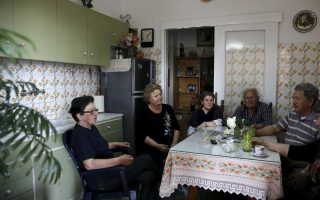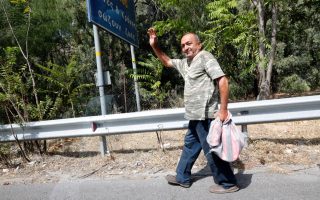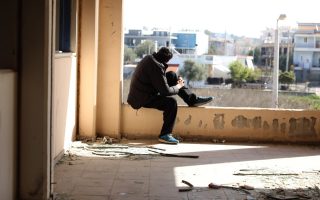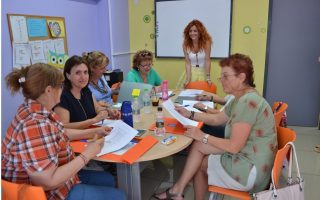Greek villages are vanishing
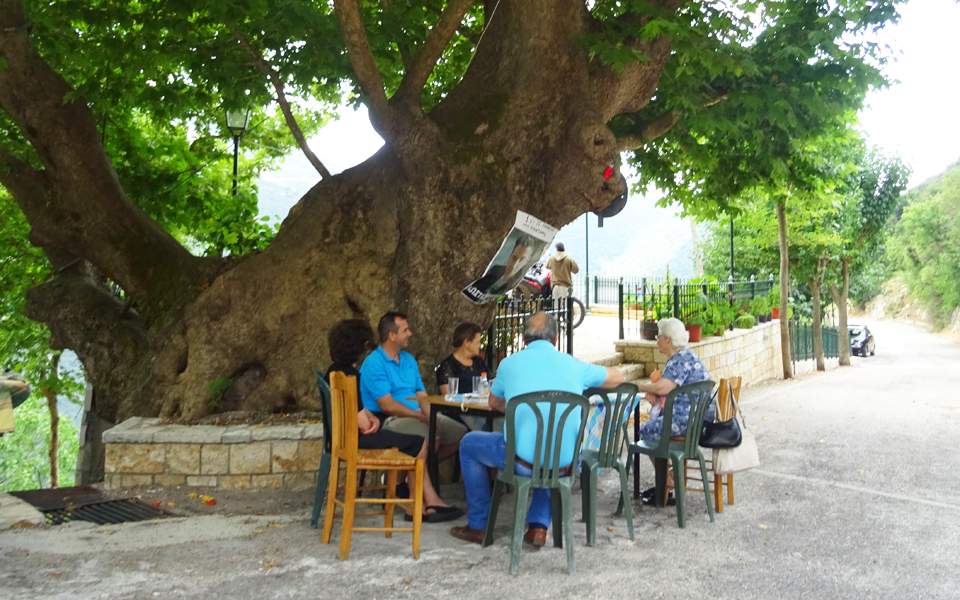
Vassilis was born in Aghios Ioannis and is one of about 10 permanent residents who remain in the village. Aghios Ioannis is part of the Thermo municipality, in the Aitoloakarnania region of western Greece. The municipality has a total population of 9,299. Aghios Ioannis is 15 kilometers from Thermo, the area’s main town. Vassilis lived in Aghios Ioannis until the age of 20, when he left for Athens to find work. Four decades later, he has retired and returned to the place where he grew up.
At an elevation of 1,000 meters, Aghios Ioannis is set in an idyllic mountain landscape. Vassilis gets emotional when talking about his youth. “In the 1960s, when I was in first grade, the village school had more than 70 students. Among those, nine were my siblings. All the families in the village back then were big. The school was right across the street from my home. After school we would all help with the housework. Then the school closed during the 1970s because there weren’t any children left due to families migrating to cities or larger villages. Aghios Ioannis and the neighboring villages started to become deserted,” he told me.
I joined Vassilis on his daily walk to the neighboring village of Koniska and we chatted about his life in Aghios Ioannis now and what it was like when he was growing up. “The loneliness is hard. Most of the time when I take this walk, the only companions I have are four dogs that like to come with me. You can count the permanent residents here on your two hands. If this continues, maybe I’ll go and live in Agrinio,” he said, referring to the largest city in Aitoloakarnania.
What was life like in the 1960s when you were growing up here?
Things we now take for granted simply did not exist. We grew up without electricity. We would study and read under the light of an oil lamp. Our mothers would use an iron heated by coals to press our clothes. The village had one phone. My father was in charge of it. The longer the distance of the call, the harder it was for it to go through. You couldn’t simply make a direct phone call. The village phone was in operation until as recently as 1990. Of course there was no TV, but we did have a radio. I remember listening to the announcements about people who’d gone missing that were put out by the Hellenic Red Cross.
Were your parents also from Aghios Ioannis?
No, they were born and raised in Sello, a village that’s about a 45-minute walk from here. In the 1950s and 60s more than 80 people lived there, but nobody lives in Sello now. Its residents moved away and by 1989 it had vanished from the map. Wherever there was arable land, they grew fir trees. Abandoned homes that are still standing are now covered in greenery and a sign on one indicates there was life there as recently as 30 years ago. Those who grew up in these villages walked a lot. Even when electricity arrived in the area, it only did so through their own hard work.
How do you see things now?
The village I live in is kept alive by a grandmother with 16 great-grandchildren who visit at certain times of the year, such as Christmas and Easter. She’s one of the many grandmothers who keep many small villages across Greece alive. Overall, though, unless something changes, many more villages will completely die out, just like Sello. As far as we’re concerned today, things continue to get harder. We’ve worked all our lives and managed to get a taste of a dignified retirement. Now all we have to look forward to is more pension cuts.

